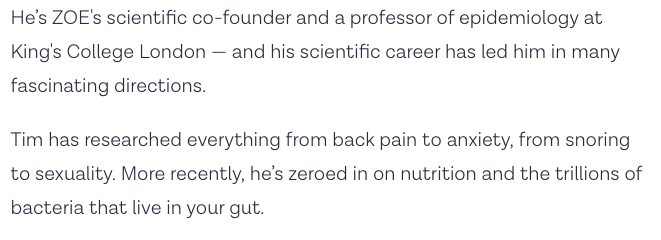
How to Use Ethos, Pathos, and Logos as a Content Writer
If you’re wondering how to use ethos, pathos, and logos in your writing, you’re in the right place. First defined by the ancient Greek philosopher, Aristotle, ethos, pathos, and logos are commonly known as the three rhetorical appeals. They might sound like they should be extras in The Three Musketeers, but actually, they’re great aids to writing persuasive content.
This post will explain the nature of the three rhetorical appeals, and how to use them in your content writing.
What is Ethos?
The word ethos comes from the ancient Greek for “character.” In rhetoric and writing, ethos is often known as “the appeal to authority” or “the appeal to credibility.” Its focus is on building the reader’s confidence in the speaker or writer and establishing them as a trustworthy source of information. This can be achieved by:
- Presenting evidence or citing respected sources
- Noting the author’s or speaker’s qualifications or experience in the field
- Using an appropriate tone of voice
- Using appropriate vocabulary
- Communicating ideas clearly and accurately (e.g., using the correct grammar and using a logical structure)
Examples of Ethos
This blog post from ZOE.com, a health science company, is a good example of ethos in practice. The blog post answers ten of the most commonly asked questions about diet and nutrition.
The first section provides the qualifications and experience of Professor Tim Spector, who is answering the readers’ questions. Sharing his credentials – ZOE.com co-founder and a professor of epidemiology at King’s College London – helps to establish his credibility and trustworthiness from the outset of the piece:

The blog post is also written in a way that encourages readers to delve further into the company’s services. Calls to action (CTAs) are spread throughout the piece and always reiterate the expertise of the company. For example, this CTA reminds the reader that ZOE.com is at the forefront of nutritional science:

Tim’s answers are often supported by further evidence and explanation. For example, in Question 1, a link is provided to give further information on the term “polyphenols.” In Question 5, Tim’s claims are supported by a link to a reputable research journal. Again, this use of ethos adds to the authority of the piece.
How to Use Ethos in Your Writing
There are various ways that you can make use of ethos as a content writer. When writing a blog post or article:
- Try to establish credibility and expertise from the beginning; highlight the credentials of the author (as in the ZOE.com example above) or draw attention to the expertise of the company.
- Back up your arguments with opinions from experts and other reliable sources.
- Write in an appropriate tone for your audience and subject manner. For example, a humorous tone would be inappropriate in this article on 6 ways to tackle financial stress.
- Make sure you organize your ideas in a logical, easy-to-follow manner.
What is Pathos
Pathos is often referred to as “the appeal to emotion.” A speaker or writer is using pathos if they try to appeal to or influence the audience’s emotions. These emotions could be positive (like happiness or hope) or negative (like anger or jealousy).
It’s also used to point out a lack of something in the audience’s lives; in this case, it’s often known as “the appeal to pain.”
Pathos can be achieved by:
- Using vivid imagery that appeals to the reader’s imagination and senses
- Using emotive language to provoke a certain reaction in the audience
- Appealing to the values and beliefs of the audience
- Using storytelling techniques to create a narrative
- Considering audience responses to similar material to help understand their emotional triggers
Examples of Pathos
One of the best-known examples of pathos is Dr. Martin Luther King Junior’s “I Have a Dream” speech, given at the 1963 March on Washington to advocate for economic and civil rights for African Americans.
His opening words set the tone for the whole speech. He immediately creates a sense of unity and shared purpose, appealing to his audience’s desire to be part of history:
“I am happy to join with you today in what will go down in history as the greatest demonstration for freedom in the history of our nation.”
In the main part of the speech, the repetition of “I have a dream,” combined with vivid imagery, appeals to the audience’s emotions and values. The “dream” becomes a powerful symbol for a better future, something that everyone can aspire to be part of:
“I have a dream that one day on the red hills of Georgia, sons of former slaves and the sons of former slave owners will be able to sit down together at the table of brotherhood.”
“I have a dream that my four little children will one day live in a nation where they will not be judged by the color of their skin but by the content of their character. I have a dream today.”
The repeated use of “we” and “together” appeals to the audience’s sense of community, empathy, and shared humanity:
“With this faith, we will be able to hew out of the mountain of despair, a stone of hope. With this faith, we will be able to transform the jangling discords of our nation into a beautiful symphony of brotherhood. With this faith we will be able to work together, to pray together, to struggle together, to go to jail together, to stand up for freedom together, knowing that we will be free one day.”
These techniques, combined with passionate, emotional delivery, make for a highly impactful speech.
How to Use Pathos in Your Writing
Using pathos as a content writer is all about carefully selecting words and phrases that resonate with your readers, helping you connect with them on a deeper, more emotional level. Try to:
- Tailor your language to your specific target audience; what are their values, desires, and concerns? How does your viewpoint, product, or service align with them? Creating customer personas can help here.
- Use emotive, evocative language to create a clear picture in the reader’s mind.
- Use simile, metaphor, and analogy to explain complex concepts or make a point in a memorable way.
- Tell compelling stories (for example, by incorporating success stories or case studies that resonate with the audience’s experiences).
- Make use of storytelling and narrative techniques. Retailers’ Christmas adverts are great examples of this! The cute kid opening presents under a beautifully decorated tree will help sell the idea that gifts are an important part of Christmas. The homeless woman looking through a window at a perfect family Christmas will generate a sympathetic response to a charity appeal.
What is Logos?
Logos, or “the appeal to reason,” is the use of logic and reasoning to support an argument. A speaker or writer using logos will typically provide evidence (such as data or statistics) of a problem and suggest a solution. Logos may involve:
- Making sure your argument is clear and well-reasoned
- Covering your main points in logical order
- Citing reputable sources like experts or scholars
- Acknowledging and addressing potential counterarguments
- Making complex ideas more accessible using visual aids (e.g., graphs) and analogies
Examples of Logos
Logos is heavily used in financial reports, legal cases, and newspaper editorials. However, it is also often used in literature. In this example, from Harper Lee’s To Kill a Mockingbird, Atticus, a lawyer, uses logos to point out that all the so-called evidence against Tom is not factual:
“The state has not produced one iota of medical evidence to the effect that the crime Tom Robinson is charged with ever took place. It has relied instead upon the testimony of two witnesses whose evidence has not only been called into serious question on cross-examination, but has been flatly contradicted by the defendant. The defendant is not guilty, but somebody in this courtroom is.”
He appeals to the jury’s reason, asking them to see past the prejudiced, baseless accusations, and focus on the evidence (or lack of).
How to Use Logos in Your Writing
To make use of logos when you’re content writing:
- Conduct thorough research to make sure your content is completely up-to-date and accurate.
- Include data and statistics to support claims about a product or service. Consider presenting them visually to aid comprehension. For example, an advert for a cleaning product could show levels of bacteria before and after cleaning.
- Clearly define any specialized terms or concepts.
- Be clear and concise (avoiding overwriting and wordiness).
- Include case studies and real-world examples (also known as social proof) to show your audience how a product or service could work for them.
- Compare and contrast different ideas, products, or solutions, to help the reader make an informed decision. For example, this Women’s Health article weighs up 14 of the best natural deodorants, leaving the reader to make the final decision.
Summary: Ethos, Pathos, and Logos
Ethos, pathos, and logos are three means of writing persuasively, known as the rhetorical appeals:
- Ethos appeals to the writer’s character, authority, and credibility.
- Pathos appeals to the reader’s emotions, values, and beliefs.
- Logos appeals to reason, how well the writer has argued their point.
The best way to use ethos, pathos, and logos in your writing is to balance them to give an even-handed outcome that isn’t too heavily biased toward any one element.
Becoming A Freelance Writer
If you think a freelance writing career could be for you, check out our course, Becoming A Freelance Writer. It covers all aspects of content writing, including how to write persuasively using rhetorical techniques such as those we’ve discussed. Sign up for a free trial today!









Leave a Comment
Your email address will not be published.